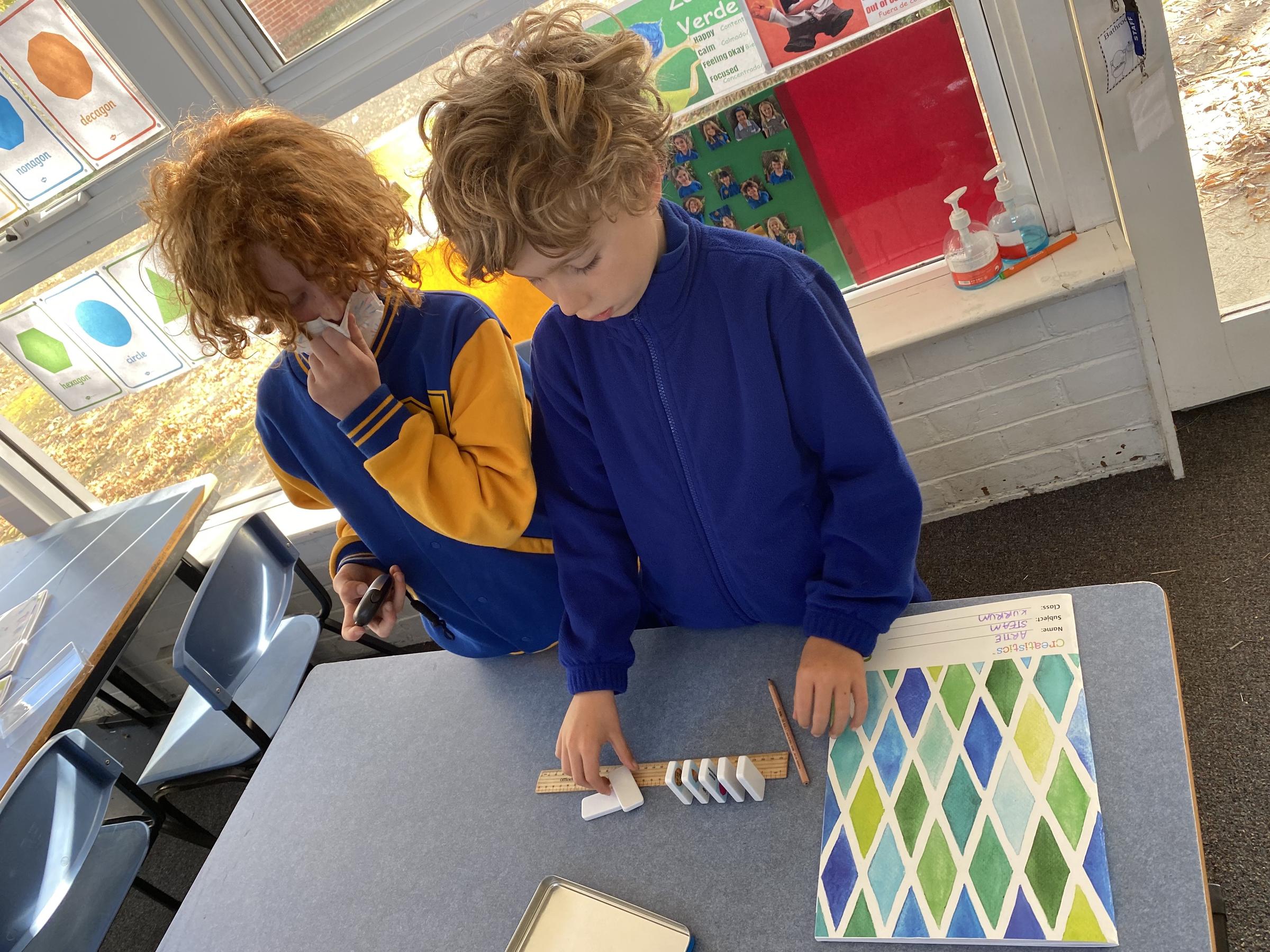STEAM

STEAM
We have started Term 2 off in STEAM have some science fun across all areas of the school, looking at physical sciences.
F/1
F1 students have been exploring the way objects move by looking at moving toys. We brainstormed words such as twist, drop, roll, slide, lift and bend to describe the way objects move. Students made predictions about which objects would roll and made observations whist investigating. They noticed that round things roll down a ramp, but flat things and things with corners slide. Students applied what they had learned to help produce some amazing marble and sponge roller paintings. Finally, students observed the way that the size of an object affects the way it moves. Through investigations using two different sized cylinders and spheres, students made predictions, then observed how larger objects roll further than smaller objects. Students will continue looking at other ways that objects move, including push and pull, and start designing and creating their own moving objects throughout the rest of the term.
2/3
23 students have been exploring the different forces that make objects move through a variety of kinetic art forms. Through a classroom scavenger hunt, students developed their understanding of push and pull. They found that pushes move objects away, whereas pulls move objects closer. They also discovered that most things can be both pushed and pulled. Students explored contact forces and forces from a distance whilst having fun with pendulum painting. They identified that the paint pot moved through contact from their hand pushing it, whereas the paint fell from the bottle because of gravity, a force from a distance. Students looked at domino art and conducted an experiment to investigate the spacing of the dominos. They predicted which domino set up would fall faster – the ones closer together or further apart. Students compared their predictions to the results of the test, whilst identifying contact forces and forces from a distance. This continued when students learned how to set up a fair test, by investigating the effects the height of a ramp. By learning that a fair test has only one variable that changes, students were able to observe that as the height of a ramp increases, so does the distance a ball will travel down it. Students will continue to explore various aspects of force to design and construct their own piece of kinetic art.
4/5/6
456 students have been working their way through the design process in a problem-based project about climate change. They began by defining the problem of climate change. Through informative videos, discussions and question generating, students learned about the main contributing factors to climate change. We then narrowed our focus to electricity generation. Collaboratively, students researched a specific type of electricity generation to discover how electricity is made, the types of energy that is converted into electricity and which forms of electricity generation contribute to climate change. From this research students discovered that a common type of energy used in the generation of electricity is kinetic energy. They then looked at how electricity is transferred from one place to another by setting up electrical circuits. They discovered that electricity must be in a closed circuit for it to work and that metal conducts electricity. Students will be using this knowledge throughout the rest of the term to design and create their own clean energy electricity generator to power a light globe, which will then be used in a visual arts project.
